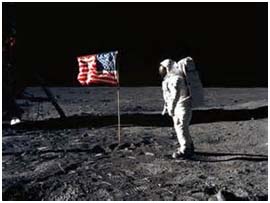- More from Famously...
- Famous Arrests
- Famous Scandals
- Famous Brands
View information about Apollo One Crew's death here on famously-dead.com. You can view information about Apollo One Crew's death and other famous deaths. You can view by name or by cause of death. We also have included the most popular famous deaths.
Apollo One Crew's Death
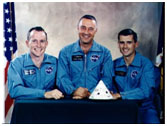
- Astronauts
- Virgil "Gus" Grissom
- April 3, 1926
- January 27, 1967
- Edward White
- November 14, 1930
- January 27, 1967
- Roger Chafee
- February 15, 1935
- January 27, 1967
- Fire
The lives and deaths of Gus Grissom, Ed White and Roger Chafee the crew of Apollo 1:
After the many successes of the US space program, including the Mercury and Gemini missions with no injuries, the deadly accident that wiped out the Apollo One crew came as a shock to many, even though the crew members were well aware of the risks involved.
Virgil "Gus" Grissom, Edward White and Roger Chafee were the first three man crew ever run by NASA.
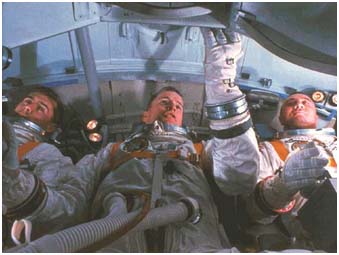
Their mission was the first in the series of flights that would eventually put a man on the moon.
They were supposed to be launched on a Saturn 1B rocket on February 21, 1967.
But less than a month before, during pre-launch testing, the crew died when fire swept through their capsule.
NASA announced the crew of Grissom (command pilot), White (senior pilot), and Chafee (pilot) on March 21, 1966. Grissom was one of the original Mercury mission astronauts and the second American launched into space. (He also almost drowned on splash down.) White was the first American to walk in space. This was to be Chafee's first mission.
Their Apollo command module was bigger and much more complex than anything else used before.
And the crew expressed their concerns about the spacecraft's potential problems by posing for a parody of their crew portrait in August, 1966.
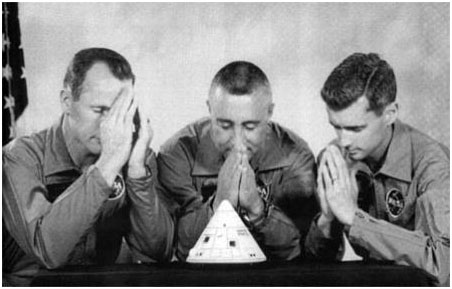
But it was no joke. During their January 27th launch simulation, the three astronauts entered the command module fully suited, were strapped into their seats and were hooked up to the spacecraft's oxygen and communications systems.
Grissom noticed a problem: a strange odor in the air circulating through his suit, which he compared to sour buttermilk. A simulated countdown was delayed but no cause could be found for the disorder so the countdown resumed. (Later, the accident investigation found that odor was not related to the fire in any way.)
Three minutes after the count resumed the hatch installation began and when the hatches were secured, the air in the capsule was replaced with pure oxygen. As the crewmembers were going through the check list, a voltage transient was recorded. Ten seconds later, Chafee said "hey", and there were scuffling sounds for a couple of seconds. Then White reported "I've got a fire in the cockpit". Then there was a scream (believed from Chafee) "There's a bad fire", followed by "I'm burning up" and a scream.
Witnesses say they saw White on TV monitors reaching for the inner hatch release as flames in the cabin spread from left to right and licked the window. But the crew was trapped…and because of the intense heat, dense smoke and ineffective gas masks, all three were killed.
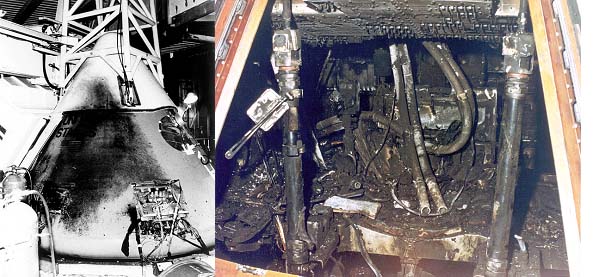
It took five minutes to open the three hatch layers and the crew was found dead in various stages of trying to escape.
An investigation revealed the electrical power momentarily failed and there was evidence of several electric arcs in the interior equipment. But investigators couldn't identify a single ignition source for the fire.
Grissom, and Chaffee are buried in Virginia's Arlington National Cemetery and White was buried at West Point Cemetery on the grounds of the U.S. Military Academy.
The Apollo One mission patch was designed by the crew.
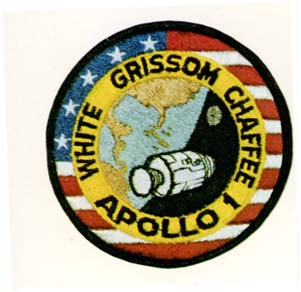
Grissom, White and Chafee all received the Congressional Space Medal of Honor, posthumously.
The Apollo program eventually was a huge success, with Neil Armstrong and Buzz Aldrin's Apollo 11 craft landing on the moon on July 20, 1969.
